We all know pace gets you paid in soccer. While most resources only focus on one aspect of speed training, I want to share my top speed drills for soccer in the 4 most important areas: acceleration, maximum velocity, agility, and strength training.
Let’s cut the crap and get right into it:
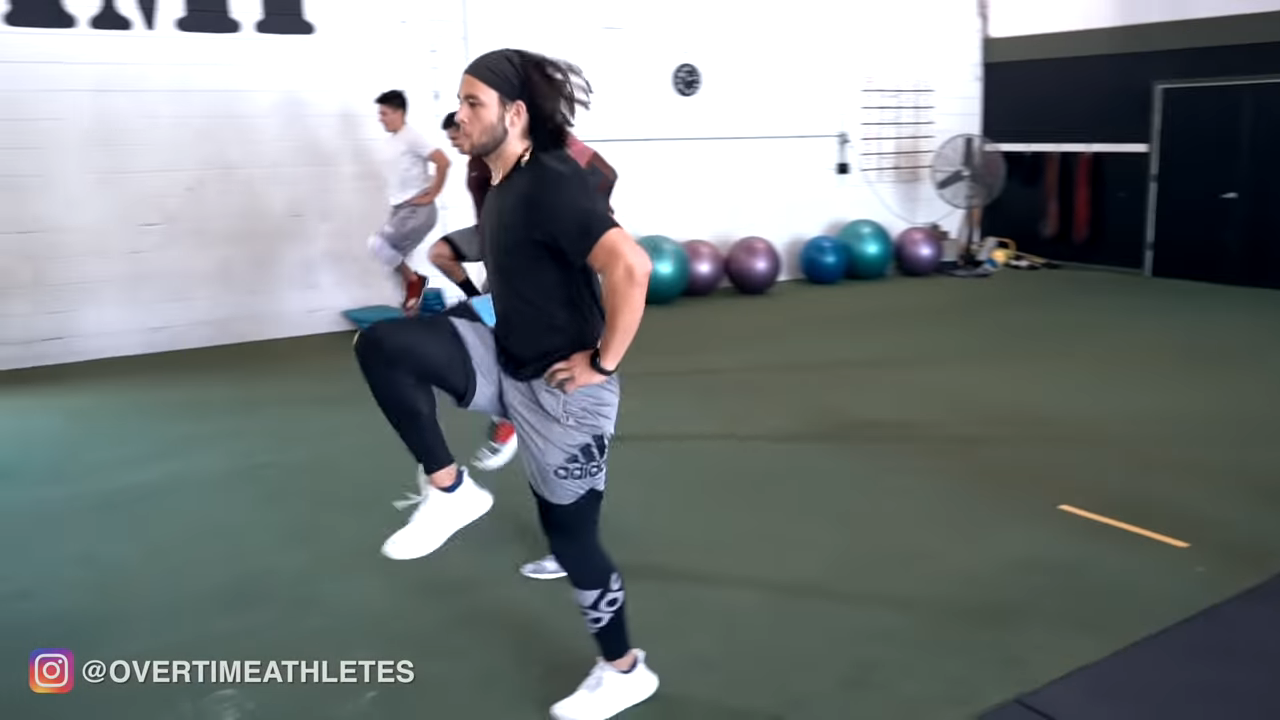
Many soccer players make the mistake of focusing on ONE method to train their speed.
They either emphasize mechanics, or plyometrics, or lifting alone.
Really, it takes a multi-faceted approach to train speed for soccer. An approach that includes strength training, speed mechanics drills, plyometrics, and more.
The strength training for soccer players must be designed to build elastic strength.
So what is elastic strength?
If you don’t know, elastic strength is the ability of the muscle tissues to absorb, store, and produce force quickly. This will ultimately carry over into faster sprint speeds, a higher vertical jump, and more.
This said, you want to avoid traditional strength training methods if you’re training for speed so I’m going to share a few more specific techniques.
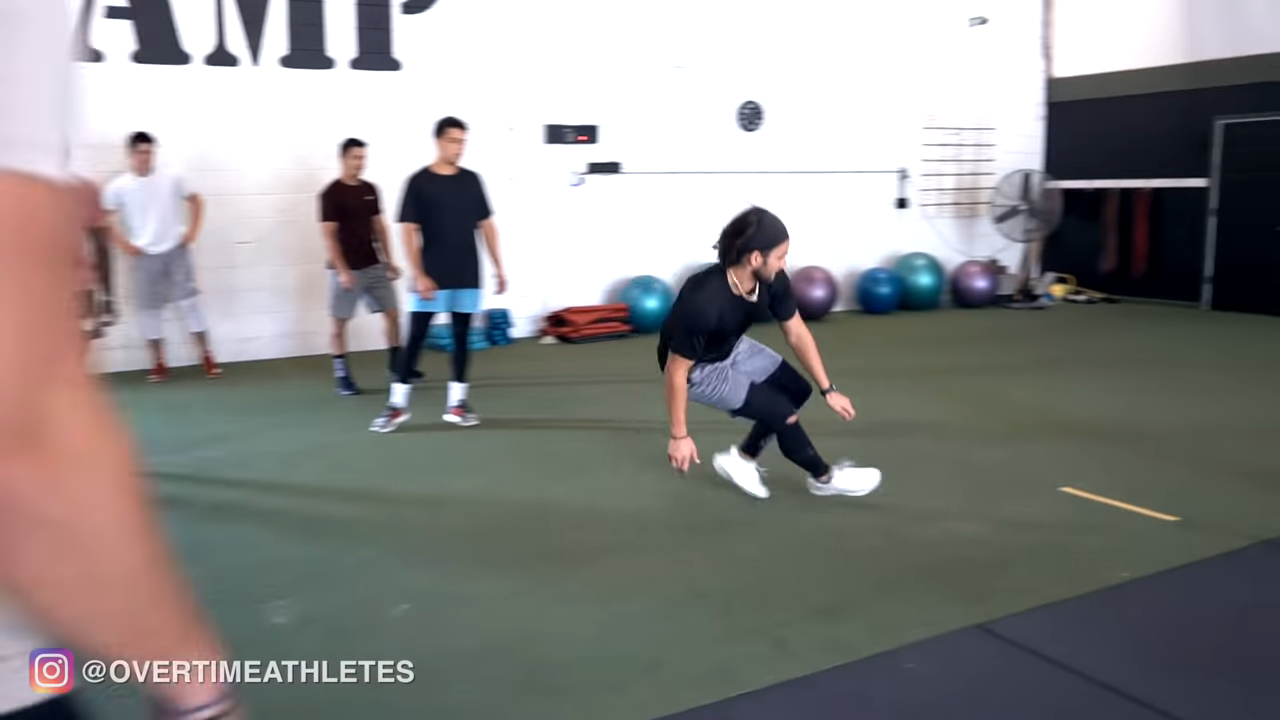 .
.
Soccer Specific
To build elastic strength you’ll need to use triphasic training, accommodating resistance, and contrast training – which I’ll touch on in this post.
It’s also important to carefully select speed drills for soccer players.
Over the years, I’ve discovered that you have to meet an athlete where he’s at, when training speed mechanics.
In other words, you can’t throw an advanced drill at an athlete with no speed training experience and expect him to execute it properly. That’s like asking a nurse to perform a lung transplant.
That’s why I created the isolate, elevate, and integrate method.
This modality prescribes you speed mechanics drills that isolate a weak component of your speed. I’ll use a drill to elevate a specific, weak component of a sprint. Finally, we can reintegrate the elevated component back to a full sprint, but with more speed.
I’m going to share foundational mechanics for each of the 4 areas you should train with speed drills for soccer:
- Acceleration
- Maximum Velocity
- Agility
- Strength Training
Overtime this will instill proper motor patterns in your sprint.
Keys to Speed Training for Soccer Players
-
ACCELERATION
There are three dimensions of speed you need to succeed in soccer.
The first is acceleration.

Acceleration is your ability to build speed quickly. And sharpening your acceleration mechanics will carry over to the field in multiple difference ways.
- Beat other players to the ball
- Win more balls
- Catch up to players on breakaways
And a bunch more.
In other words, your ability to accelerate will be key in your ability to outpace players and put yourself in better positions.
Acceleration Speed Drills for Soccer Players
There are 3 POWERFUL acceleration drills I like to use to use with soccer athletes. Each of these drills is focused on getting you to move with the proper mechanics in order to quickly build speed.

As a good starting point, you’ll always want to maintain a forward lean and shin angle. This is puts you in the best position to produce horizontal force.
1. Wall Drill
The wall drill teaches the athlete how to produce force while accelerating.
HOW TO: For this drill, you want to start with your arms straight out, hands slightly below your chest. Take a few steps back so you’re leaning into the wall. From here, pop one thigh up with the toe flexed. Rapidly switch legs while pulling with the leg back to the ground.
You want to make sure you’re not STABBING into the ground and PULLING with the glutes.
2. Partner Release Starts
You’ll need a partner for this drill.
This drill puts you in the acceleration position again, same as the wall drill. However, this time, you’ll need to synchronize the arms and legs, while still producing force into the ground using the right mechanisms.
HOW TO: Your partner will hold you in place as you try to produce enough force to push him back. After a few “revs” your partner will release you to propel down the turf in a full on sprint.
A lot of athletes feel uncomfortable being in the acceleration position initially. They think they’re going to fall or face plant.
This drill gets them accustomed to being in this position when the partner holds him. And it forces them into a sound acceleration position while sprinting after the partner releases them.
3. 2 Point 10 Yard Starts
Practicing a few 10 yard starts gets you to zoom on your acceleration mechanics. This drill is an opportunity to pick up on faulty acceleration mechanics, and integrate the proper motor patterns you worked on prior.
Typically, I like to pair one of the drills above with a 10 yard start.
Additionally, an athlete’s 10yd time is the ULTIMATE indicator of their acceleration mechanics and horizontal force production.
4. Power Skips for Distance
Horizontal force production is a HUGE contributor to your acceleration mechanics. So it’s only right I share a few horizontal plyometrics.
HOW TO: This is is running movement, using opposite arm and leg for each stride. You should push off the foot until you float, going for distance here.
5. Staggered Stance Broad Jumps
I see a lot of athletes push off of one leg more than the other when accelerating…
However, common sense tells you that pushing off two legs would be stronger than one. That’s why I like to work on the staggered stance broad jump.
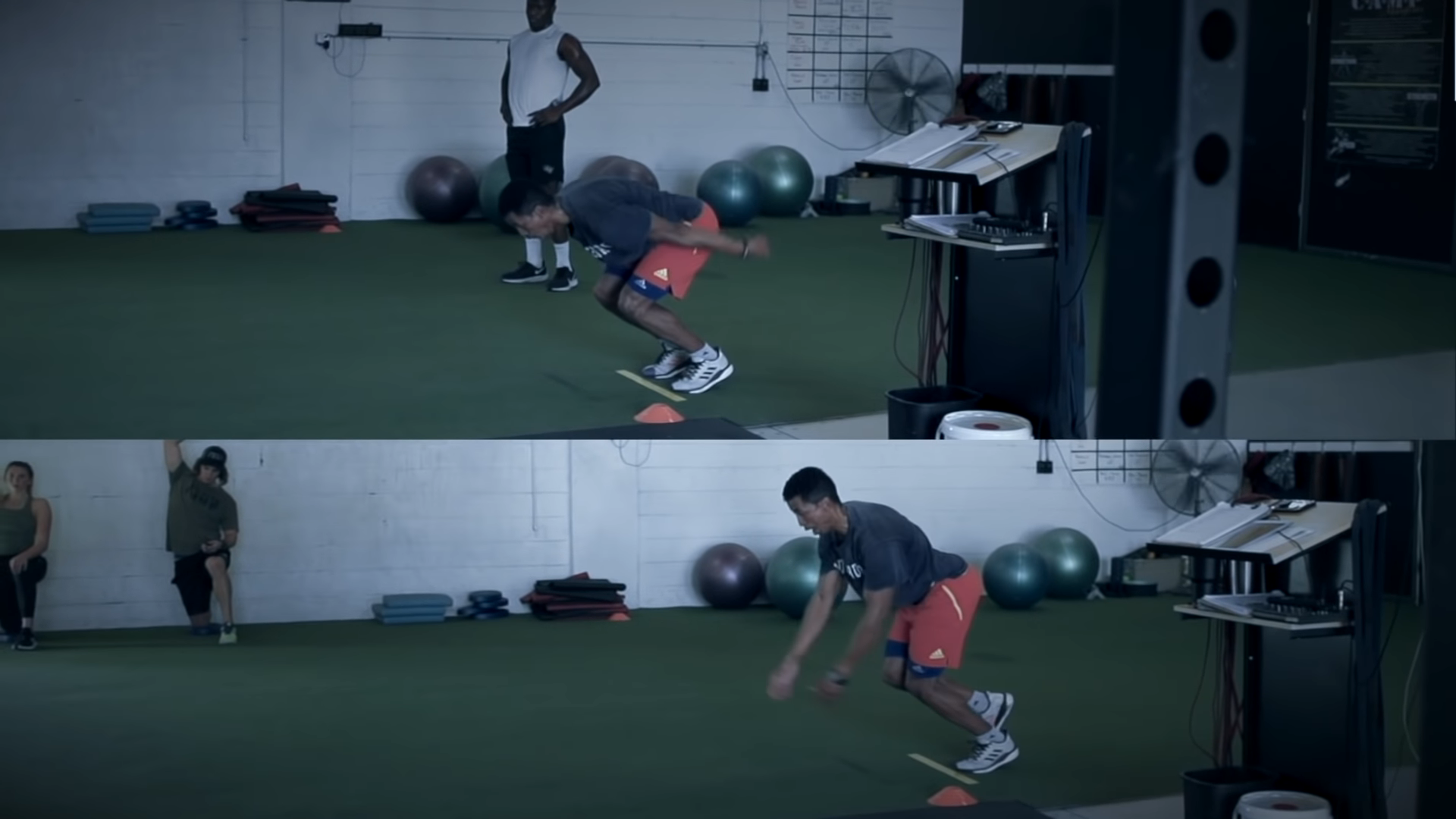
This drill teaches you to work through full hip extension and use both legs for power before making the first stride.
The next dimension of speed for soccer players is top speed, or maximum velocity.

2. MAXIMUM VELOCITY
Top speed is just that… Your top speed. It’s the maximum velocity you reach after your acceleration phase.
A lot of top speed comes down to mechanics and force production.
I see a lot of athletes with BAD running habits, such as swooping the leg way back behind their glutes, reaching with their leg before they make ground contact, and of course sloppy arm mechanics.
Once we’ve got our start down with acceleration, we can start working on our top speed.
Below I’ll share some drills that address a few of those issues. You can also check out this plyometric circuit for improving top speed.
Top Speed Drills for Soccer Players
Before any athlete performs advanced speed training, it’s important to lay a sound foundation. This will be critical in training speed for soccer.

I’m going to share a handful of those foundational drills below that you can use to sharpen your mechanics.
Using drills is like learning the alphabet. You need to know every letter before you can make words.
These drills will help you become a faster sprinter AND instill proper motor patterns giving you a future to perform even more advanced drills, and enhance your speed further.
1. A-Skip
A-Skips are a go-to for athletes of all sprinting levels. The A-Skip teaches you to “pop the thigh” while extending the opposite hip. It also teaches you to properly apply force into the ground.
This drill is less about pushing into the ground and more about pulling with the glute.
2. B-Skip
B-Skips teach the athlete some of the same things as A-Skip, while also encouraging you to properly release the hamstring.
A critical piece of the sprint puzzle, is the popping of the thigh.
However, contracting the hamstring early and reaching for your next step, causes a premature stop which can seriously drain your speed.
The B-Skip teaches you to properly release the hamstring with the thigh in the proper position.
3. Straight Leg Bounds
Straight Leg bounds work the hip separation of an athlete while also teaching you to produce force with the glutes.
The athlete propels himself down the turf by pulling with the glute every time he makes contact with the ground.
4. Power A-Skip
Power A-Skip is essentially the same as a regular A-Skip except it adds a horizontal force production component to the drill.
5. Power Skips for Height
Now I want to move into two more plyometric movements.
The plyometrics that carry over towards your top speed the most are vertical plyometrics. If you don’t know, at top speed, you’ve essentially stopped producing horizontal force and are just maintaining.
However, you are producing a TON of vertical force to fight gravity. That’s why vertical plyometrics are absolutely essential for top speed.
This said, the first plyometric for top speed I want to share is a power skip for height.
The power skip is similar to a sprint in that you pop the opposite thigh and pump the opposite arm. The only difference is you’re pushing off the ground getting as high as you can.
7. Sprinter Step Ups
The next vertical plyometric I want to share is a sprinter step up.
HOW TO: For this movement, you’ll find a raised surface. Preferably pick one high enough that the leg you rest on the surface is bent at a 90 degree angle. From there you’ll lift the arm opposite the raised leg like you’re sprinting.
After that, you’ll push off the surface, and raise the opposite leg and opposite arm. Then you’ll come back down into your starting position, controlling your drop by making contact with the raised surface.
3. AGILITY
Finally, the last dimension of speed you need is agility.
Agility is change of direction ability with a reaction component. And this is crucial for soccer players when making cuts, reacting to defenders, and having an awareness of the ball while dribbling down the field.
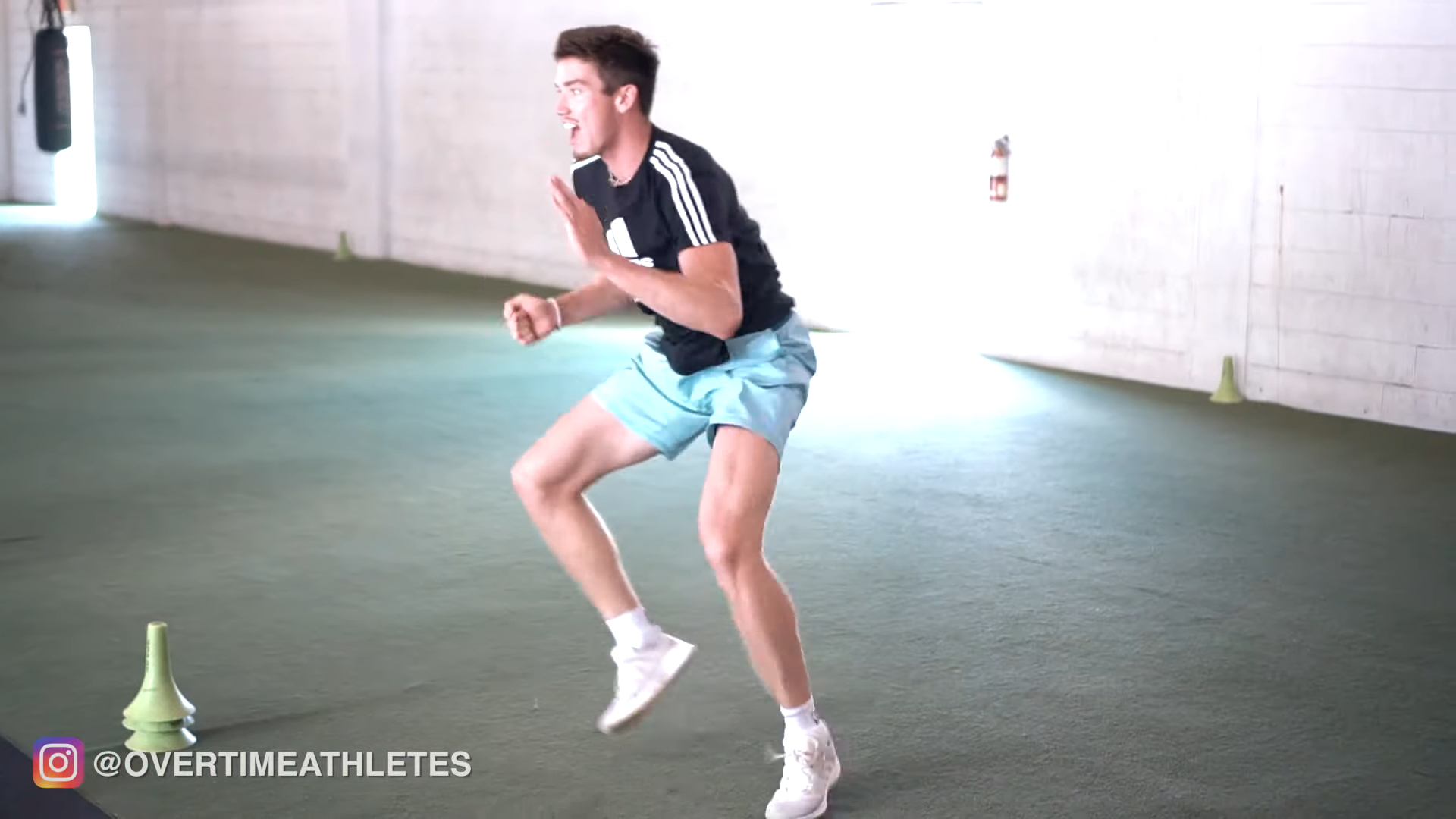
Agility also plays a big role in your ability to move laterally.
Below, I’ll share some foundational agility drills that help to lay a strong base for change of direction. This will allow you to make cuts and change directions quickly without risk of injury.
Agility Drills for Soccer Players
I see a lot of soccer athletes skip over the foundation change of direction movements they need to become more agile FASTER. These movements lay a strong foundation of hip abduction and adduction as well as inversion and eversion of the ankle that will allow them to cut faster.
In other words, these movements are CRITICAL for your success. And they’ll play a HUGE role in your speed training for soccer.
1. Lateral Line Hops
Lateral line hops may seem basic, but your ability to perform them will determine how effectively you can cut.
Start by performing them on both legs, then progress to one leg.
Make sure you keep your center of gravity over the line, knee slightly bent, and get as many touches as you can in the allotted amount of time.
2. Lateral Cone Hops
Next, you’ll move to lateral cone hops. These focus on change of direction, as well as body control.
You’ll set three cones up about a foot apart from each other (as you get better you can increase the distance between the cones). Start on one leg with the knee slightly bent and hop down the line of cones and back while spending as little time on the ground as possible. There should be no long pauses in between cones.
You should also ensure you land with your foot in line with each cone. This adds the body control element to this drill.
3. Short Lateral Shuttle
The short lateral shuttle focuses on your ability to produce force laterally as well as absorb force, or decelerate.
This one seems simple, but it has DEEP benefits.
Set down three cones seven feet apart from each other. Start at the middle cone and shuffle to the right, then change directions and go to the far left cone. Change directions one more time and finish at the middle cone. Do this on both sides.
It will raise your ability to produce and absorb force laterally… This is critical for your movement on the field, playing a big role in your speed drills for soccer.
4. Skater Jumps
Skater jumps are a plyometric movement that will raise your ability to use the knee, hip, and ankle to produce force laterally.
I like to emphasize both horizontal and vertical force production on these. I tell the athlete to get UP and OUT as high as they can and stick the landing.
5. Ascending Skater Jumps
The last change of direction drill I’ll share is an ascending skater jump. This will work on lateral force production AND force absorption.

In this drill I want the athlete to push out laterally as far as he can, then he’ll catch himself with his other leg and push back halfway to where he came from.
Strength Training for Speed
In addition to plyometrics and speed drills for soccer, you also need strength training for speed to develop winning speed.
The goal of this kind of strength training should be to build elastic strength. Elastic strength is the ability of the muscle tissue to absorb, store, and produce force quickly. This kind of strength that almost seamlessly translates into more power.
However, most soccer athletes strength train the WRONG way.
They train like powerlifters who are slow, stiff, bulky, and overweight. Powerlifters can’t run fast or jump high, so why would you train like one?
You shouldn’t.
The reason the powerlifter approach doesn’t carry over to speed is because it’s pure absolute strength training. Absolute strength IS important for speed, but it’s not the end all.
Absolute strength is the total amount of force you can produce, regardless of weight. Imagine you have two guys who are both deadlifting 600 pounds: one guy weighs 200 pounds and the other 300 pounds. The smaller athlete possesses greater absolute strength.

So, how do we build elastic strength that translates to more speed?
Elastic Strength
There’s one method I like to use to build high amounts of elastic strength. It’s called Triphasic Training.
Triphasic Training was discovered by a D-I strength and conditioning coach named Cal Dietz. The essence of this method is to dedicate one block of training to a single portion of movement.
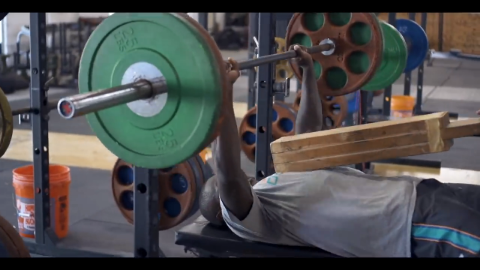
One block should be entirely dedicated to the eccentric portion of movement, one to the isometric portion, and the last will be dedicated to the concentric portion of movement.
Training this way:
- Builds the capacity of the muscles to absorb force
- Teaches the body to recruit more fast twitch muscle fibers
- Helps you transfer more force seamlessly through the muscles
- Produce more force faster
- And a bunch more
You’ll use purely eccentric tempos for your first block of training, meaning the timing for each rep varies. Then, you’ll use isometric training in the second. And finally, you’ll use a combination of the two while moving the bar explosively in your concentric-focused block.
Summary: Best Speed Drills for Soccer
As a quick recap, here’s how to train speed for soccer:
- Train ALL dimensions of speed
- Sharpen your acceleration mechanics with speed drills and form-focused starts
- Increase your maximum velocity with mechanics drills
- Use plyometrics to build horizontal and vertical force production
- Build your foundation of agility with drills that build the ankle, knee, and hip
- Don’t forget to strength train to build elastic strength
- Use tempos to increase the amount of force your muscle tissue can absorb and produce
The speed training for soccer advice I shared above is everything you need to lay strong foundation for more speed.
But, it’s just the tip of the iceberg.
As you master the drills and movements I shared above, you’ll need more advanced drills to continue your speed development.
That’s where Athletic Speed System comes in.
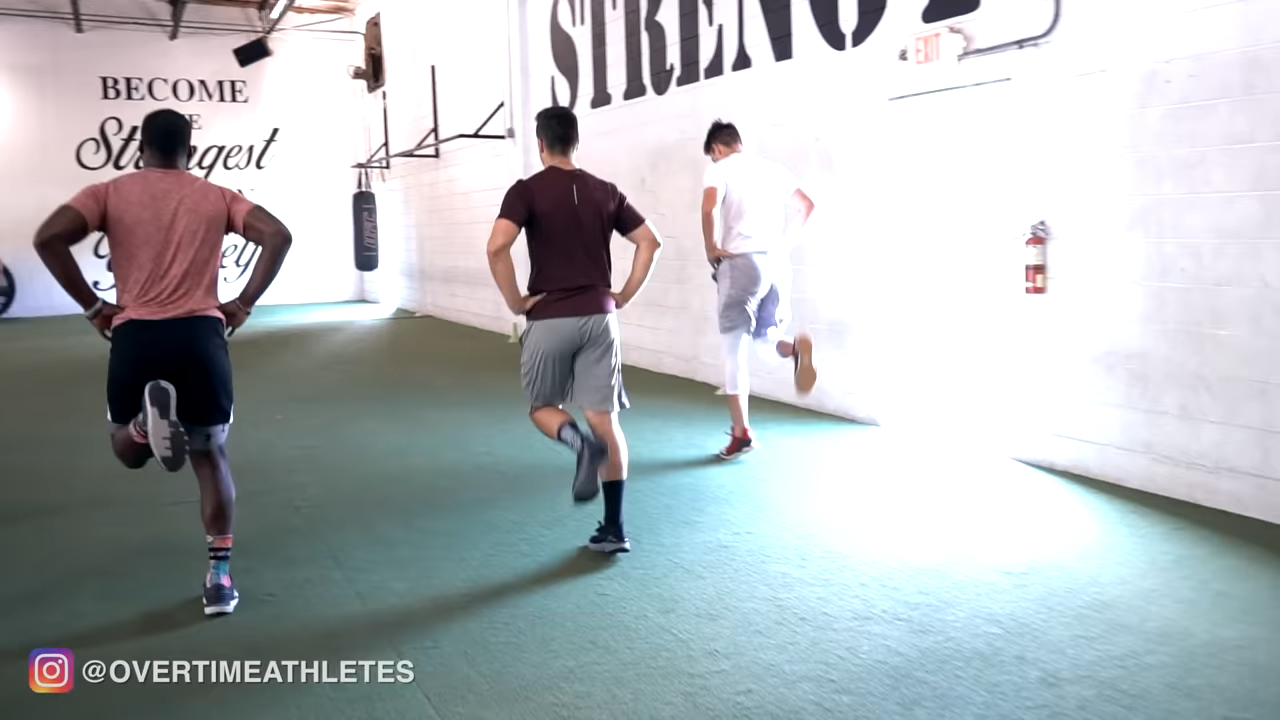
Athletic Speed System uses my isolate, elevate, and integrate system I shared above to:
- Isolate your weaknesses
- Raise their function
- Re-integrate them into your sprinting.
It’s foolproof, it’s effective, it’s used by hundreds of athletes around the world.
You’ll also receive a FULL strength training protocol along with Athletic Speed System.
This strength training approach is designed to help you build strength that translates to more on the field success: not just strength that makes you look good in the weight room.
If you ask me, this program is the perfect tool to maximize your speed training for soccer.
In short, Athletic Speed System is a 14 Week Program that’s ideal for any athlete who needs speed to succeed.
And you can grab Athletic Speed System with TWO FREE SPEED BONUSES at the link below:
